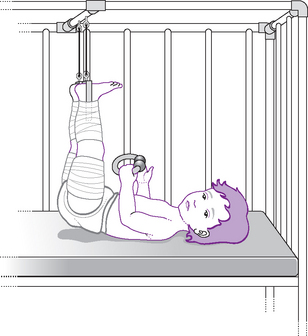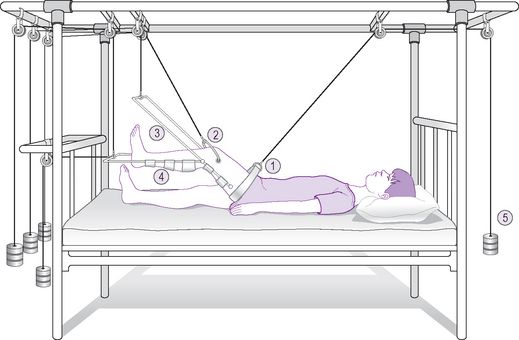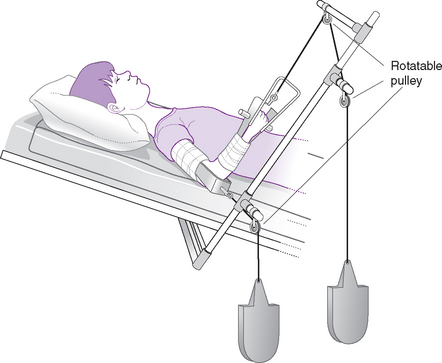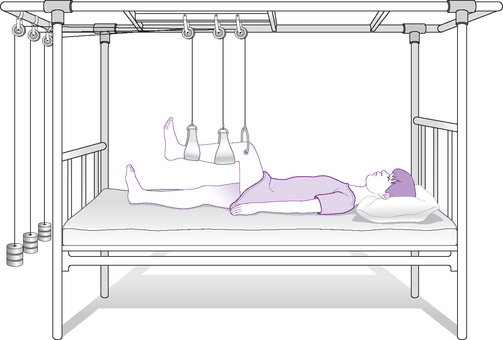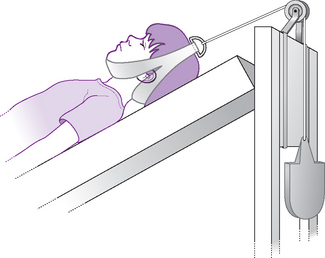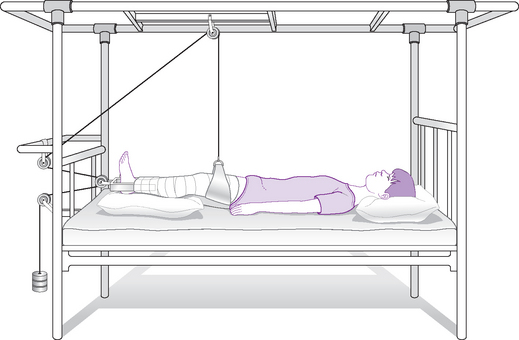Chapter 31 Traction
INTRODUCTION
Traction is a pulling force. In orthopaedics, traction therapy is used as a conservative intervention. It is used to reduce and maintain alignment of fractures, immobilise inflamed or injured joints, relieve pain, correct mild deformities and reduce muscle spasm. Skin traction was one of the first management techniques in orthopedics. Currently, skin traction is primarily used in managing trauma. Advantages include preventing further displacement of the fracture and maintaining or improving alignment so reduction of the fracture is easier when operated on (Anderson et al 1993, Harvey 1998, Needof et al 1993). In theory, this technique replicates the actions of the surgeon in reducing the fracture (Drapper & Scott 1998).
EQUIPMENT
Traction equipment and terminology can be confusing and anxiety provoking to nurses who do not fully understand the components and how each attaches to the other. The type and method of traction used is indicated by the type and position of the fracture, the age of the child and the desired outcome. Other factors such as trauma, surgeon’s preference and availability of equipment will also be considered. Nurses caring for patients on traction need a working knowledge of each of the various types of traction along with its rationale, correct set-up and maintenance. Folick et al (1994) recognise that there are many variations in practice, all of which fulfil the same purpose. What is essential is that a uniform approach is used once the traction is established. There are many types of traction and the names may vary from hospital to hospital. There may also be variations and alterations to accommodate individual needs.
Types of traction
Traction is either fixed or balanced:
Both skin and skeletal traction are used for children.
Skeletal traction
The following types of traction are most commonly used for children:
The following forms of traction are now rarely used for children:
